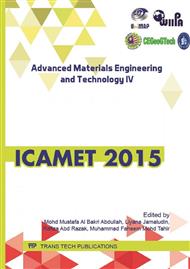[1]
Zampini D. Future developments of concrete in the construction materials industry. In: Forde M, editor. ICE manual of construction materials, vol. 1. Thomas Telford; 2009. p.251–8 (Chapter 21).
Google Scholar
[2]
Humphreys K, Mahasenan M. Substudy 8: climate change—toward a sustainable cement industry. An independent study commissioned by the world business council for sustainable development (WBCSD); (2002).
Google Scholar
[3]
Sousa-Coutinho J. Properties of hardened concrete. In: Forde M, editor. ICE manual of construction materials, vol. 1. Thomas Telford; 2009. p.153–67 (Chapter 15).
Google Scholar
[4]
E. ul Haq, S. Kunjalukkal Padmanabhan, and A. Licciulli, Synthesis and characteristics of fly ash and bottom ash based geopolymers–A comparative study, Ceram. Int., vol. 40, no. 2, p.2965–2971, (2014).
DOI: 10.1016/j.ceramint.2013.10.012
Google Scholar
[5]
Ban CC, Ramli M. The implementation of wood waste ash as a partial cement replacement material in the production of structural grade concrete and mortar: an overview. Resources, Conserv Recycl 2011; 55: 669–85.
DOI: 10.1016/j.resconrec.2011.02.002
Google Scholar
[6]
E. ul Haq, S. Kunjalukkal Padmanabhan, and A. Licciulli, Synthesis and characteristics of fly ash and bottom ash based geopolymers–A comparative study, Ceram. Int., vol. 40, no. 2, p.2965–2971, (2014).
DOI: 10.1016/j.ceramint.2013.10.012
Google Scholar
[7]
Elinwa AU, Ejeh SP. Effects of the incorporation of sawdust waste incineration fly ash in cement pastes and mortars. JAABE 2004; 3(1): 1–7.
DOI: 10.3130/jaabe.3.1
Google Scholar
[8]
Elinwa AU, Mahmood YA. Ash from timber waste as cement replacement material. Cement Concrete Composition. 2002; 24: 219–22.
DOI: 10.1016/s0958-9465(01)00039-7
Google Scholar
[9]
F. Škvára, K. Kolár, J. Novotný, Z. Zadák, The effect of cement particle size distribution upon properties of pastes and mortars with low water-to-cement ratio, Cem Concr Res 11 (1981) 247–255.
DOI: 10.1016/0008-8846(81)90066-1
Google Scholar


